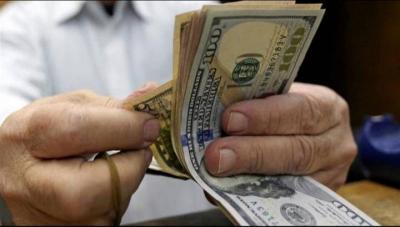Hardly had the markets absorbed the effects of the Governor of Lebanon's Central Bank's statement regarding the cessation of dollar purchases starting today, when sources close to bankers leaked the intention of the central bank to raise the value of withdrawals in "lollars" to 15,000 liras. Two steps that financial advisor Dr. Ghassan Chamas interprets as part of the effort to "cool down the dollar." This follows an excessive heating in recent days fueled by the printing of thousands of billions of liras. "On one hand, the exchange rate temporarily decreases in the parallel market, and on the other hand, it calms depositors' withdrawals while they await an increase in the value of the banking dollar. Thus, the demand for hard currency decreases and the exchange rate is temporarily restrained."
The attempt to lower the dollar exchange rate in the parallel market and raise the value of the banking dollar to 15,000 liras cannot be separated from one another. Raising the value of the "lollar" would be futile with the exchange rate exceeding the threshold of 40,000 liras, and would not garner the desired acceptance as long as the dollar continues to rise, from Chamas' perspective. This might be one of the objective reasons for the central bank pumping dollars into the market to lower the exchange rate, while claiming to have stopped purchasing dollars through the "platform." This is in terms of form; however, in terms of substance, there is a hidden agenda revealed by the central bank's failure to specify the duration for which it would stop buying dollars, despite most estimates suggesting it would be short, aimed at "waving the stick" of ceasing dollar purchases from currency exchange operators.
In addition to these two new factors, two developments emerged in recent weeks: the first, financial, was the announcement of an impending rise in the official dollar exchange rate to 15,000 liras. The second, monetary, was represented in the issuance of intermediary circular No. 646 by the Central Bank, which requested borrowers to repay loans in the same currency as the loan. "This means giving borrowers the opportunity to negotiate with banks and repay their debts based on the exchange rate of 1,500 liras before the official rate changes," says economic expert Jan Tohme. However, all these measures, according to Tohme, "will not solve the problem and will not even be able to unify the exchange rate. Rather, it will represent an addition of a new exchange rate to the existing prices, as they do not allow the market to control this process." Thus, this represents an authoritative escape from facing the bigger problems, while what is required is fundamental economic, financial, and monetary reform measures that would allow resolving the crisis and adopting sound approaches to ensure both economic and social stability.




